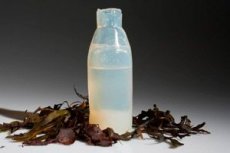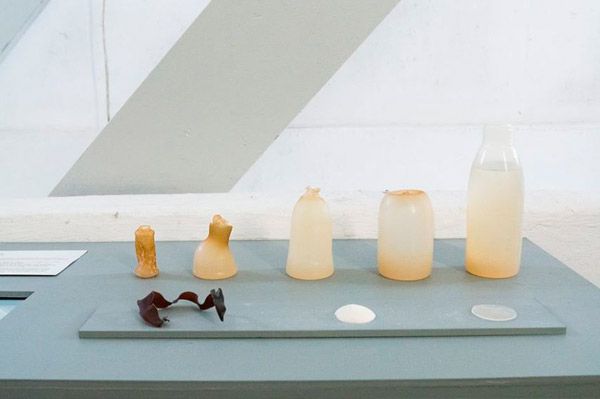New publications
Algae bottle - an environmentally friendly alternative to plastic
Last reviewed: 02.07.2025

All iLive content is medically reviewed or fact checked to ensure as much factual accuracy as possible.
We have strict sourcing guidelines and only link to reputable media sites, academic research institutions and, whenever possible, medically peer reviewed studies. Note that the numbers in parentheses ([1], [2], etc.) are clickable links to these studies.
If you feel that any of our content is inaccurate, out-of-date, or otherwise questionable, please select it and press Ctrl + Enter.

We are all accustomed to plastic and do not even think about the harm that this unique material causes to the environment, for example, ordinary plastic bottles decompose in nature for more than 150 years. Considering that most water bottles immediately after use end up in the trash, where they cause enormous harm to the environment, we can talk about a serious threat hanging over our planet. In Iceland, designer Ari Jonsson found an unconventional solution to this problem - making eco-friendly bottles, for example, from algae.
The author of the idea himself noted that he had long felt the need to replace at least some of the plastic around us, which is produced, used in everyday life and thrown away daily by millions of people. Ari wondered why people use materials that have been poisoning the earth for years, and realized that it was time to act.
The solution to the problem should be agar - powder from algae. To create the bottle, Jonsson made a mixture of agar powder and water, then heated it and poured it into a special mold with ice water, after which he received a bottle that is completely suitable for use, but still has some differences from the usual plastic one.
First of all, the algae bottle only retains its shape when filled, and after emptying it gradually deteriorates – according to Jonsson, this is the most natural and safe replacement for plastic that can be invented today. It is also worth noting that agar is often used as a thickener for desserts in vegetarian or vegan cuisine, so the algae bottle is edible, but has a rather specific taste.
Every year, hundreds of millions of plastics are produced in the world, which are used mainly as packaging material. Only a small part of all plastic is recycled, the rest poisons the earth in landfills for years or ends up in the ocean, which is also not good for the environment.
In Japan, experts have proposed a solution to the plastic waste problem that is completely opposite to the Icelandic designer. The Japanese have managed to identify a new bacterium that can break down plastic in a short time.

Bacteria have been found in various sediments (silt, soil, etc.) - studies have shown that these microorganisms feed on plastic, which is used as a source of carbon and energy, after bacteria were placed in a container with plastic particles, the destruction of the material occurred within a few weeks.
According to scientists, during the course of evolution, microorganisms developed several enzymes, the need for which arose due to the harsh conditions, since bacteria had to survive in an environment overflowing with PET. Thanks to these enzymes, bacteria can decompose the plastic into its main environmentally friendly components (ethylene glycol and terephthalic acid).
In the course of further work, scientists identified a gene that helps produce new enzymes in microorganisms and were able to grow them in laboratory conditions. Experiments showed that laboratory bacteria also break down plastic and suggested using them for a more efficient method of recycling plastic waste. But when the method will be widely used remains unknown.
